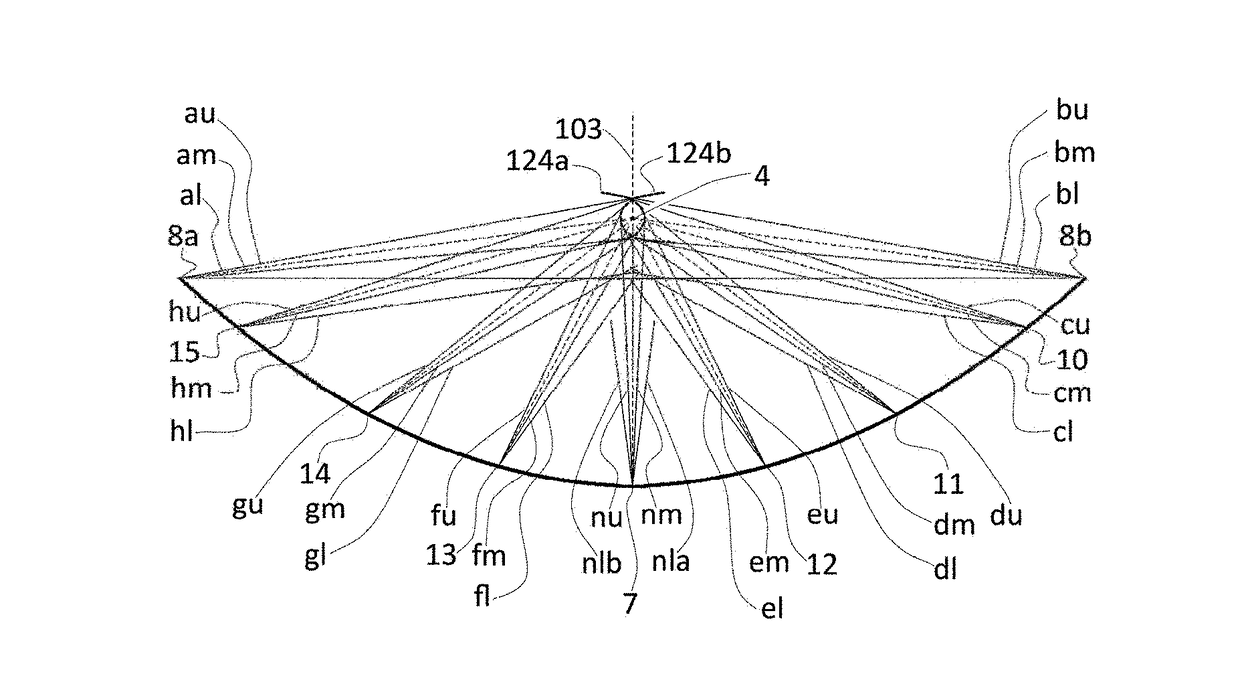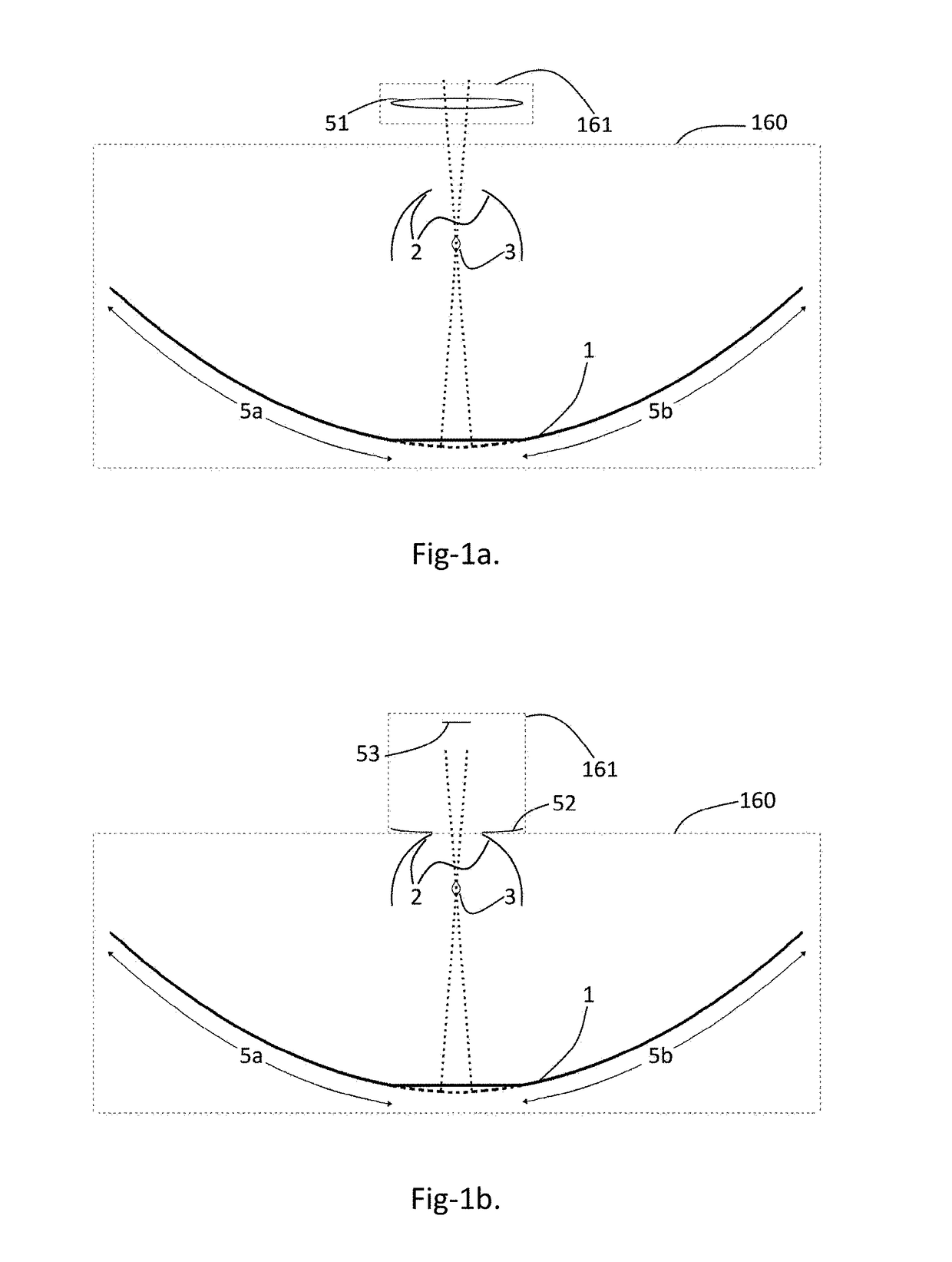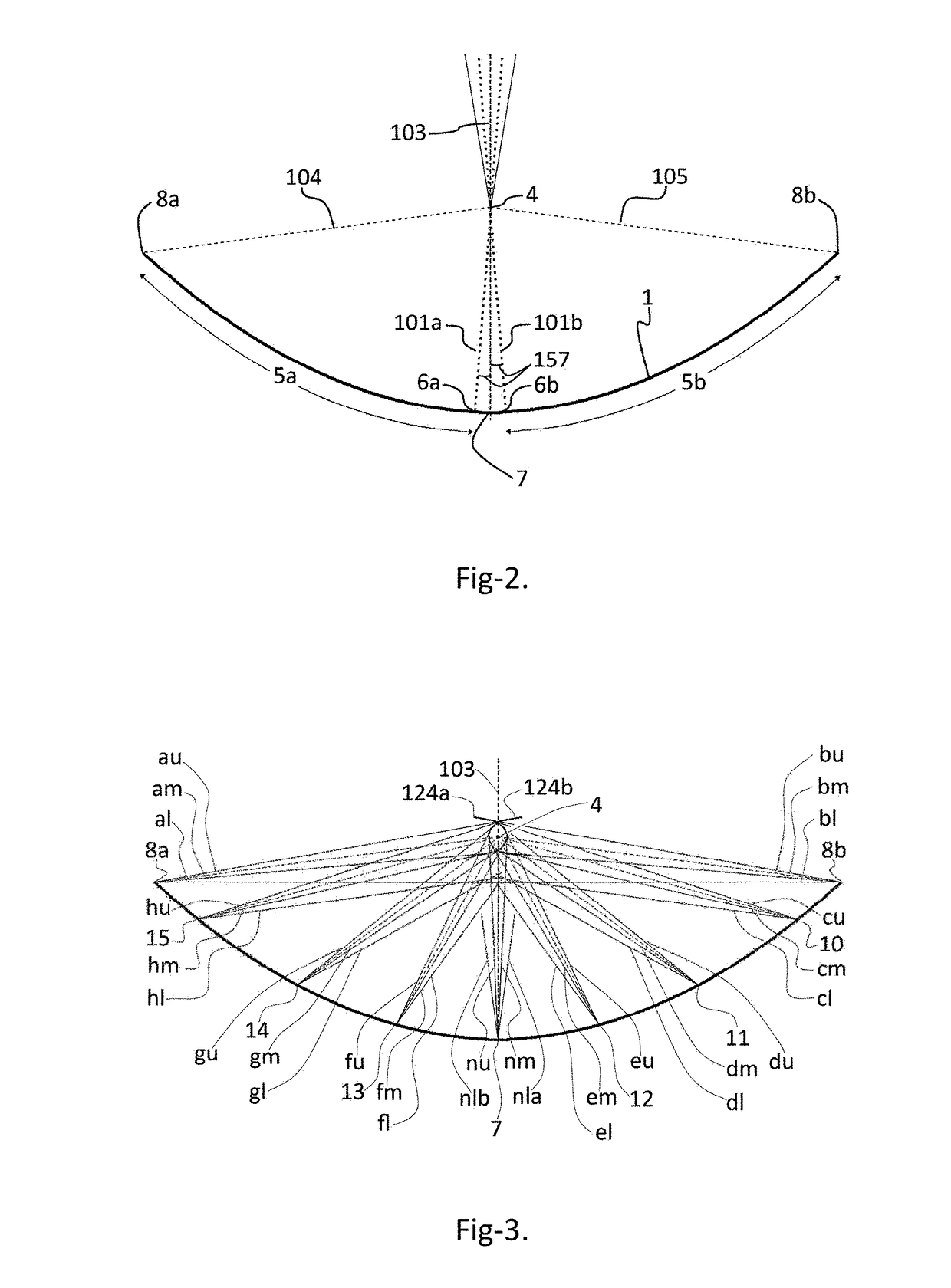Radiation concentrator incorporating compound confocal uneven parabolic primary reflector, tailored secondary reflector and tailored receiver
a technology of compound confocal and uneven parabolic, which is applied in the field of radiation concentrators, can solve the problems of inability to achieve the high concentrations that non-imaging concentrators can deliver, the cpc will have to be impractically tall, and the optics, etc., and achieves the effect of convenient implementation
- Summary
- Abstract
- Description
- Claims
- Application Information
AI Technical Summary
Benefits of technology
Problems solved by technology
Method used
Image
Examples
Embodiment Construction
[0033]To clearly illustrate the features, geometry and principles of the invention the cross sectional view of various exemplary embodiments of the invention and the trajectory of light through them are described in the following part. The various embodiments described are trough type radiation concentrators, suitable for different distant radiation sources which subtends different angles at the aperture of the concentrator.
[0034]Please refer to FIG. 1a; this embodiment of the invention, a trough type radiation concentrator, includes the main concentrator (160) consisting of a primary reflector (1), a two part secondary reflector (2), a common receiver (3) and a lens (51) as the auxiliary concentrator (161). Please refer to FIG. 1b; this embodiment of the invention, a trough type radiation concentrator, includes the main concentrator (160) consisting of a primary reflector (1), a two part secondary reflector (2), a common receiver (3) and a combination of reflectors (52 and 53) as t...
PUM
 Login to View More
Login to View More Abstract
Description
Claims
Application Information
 Login to View More
Login to View More - R&D
- Intellectual Property
- Life Sciences
- Materials
- Tech Scout
- Unparalleled Data Quality
- Higher Quality Content
- 60% Fewer Hallucinations
Browse by: Latest US Patents, China's latest patents, Technical Efficacy Thesaurus, Application Domain, Technology Topic, Popular Technical Reports.
© 2025 PatSnap. All rights reserved.Legal|Privacy policy|Modern Slavery Act Transparency Statement|Sitemap|About US| Contact US: help@patsnap.com



